The simplest way to get LinkedIn Ads data in Close CRM
Want to know if your LinkedIn ads are generating leads and customers? Read on and we'll show you how to get your LinkedIn data into Close so you can find out.
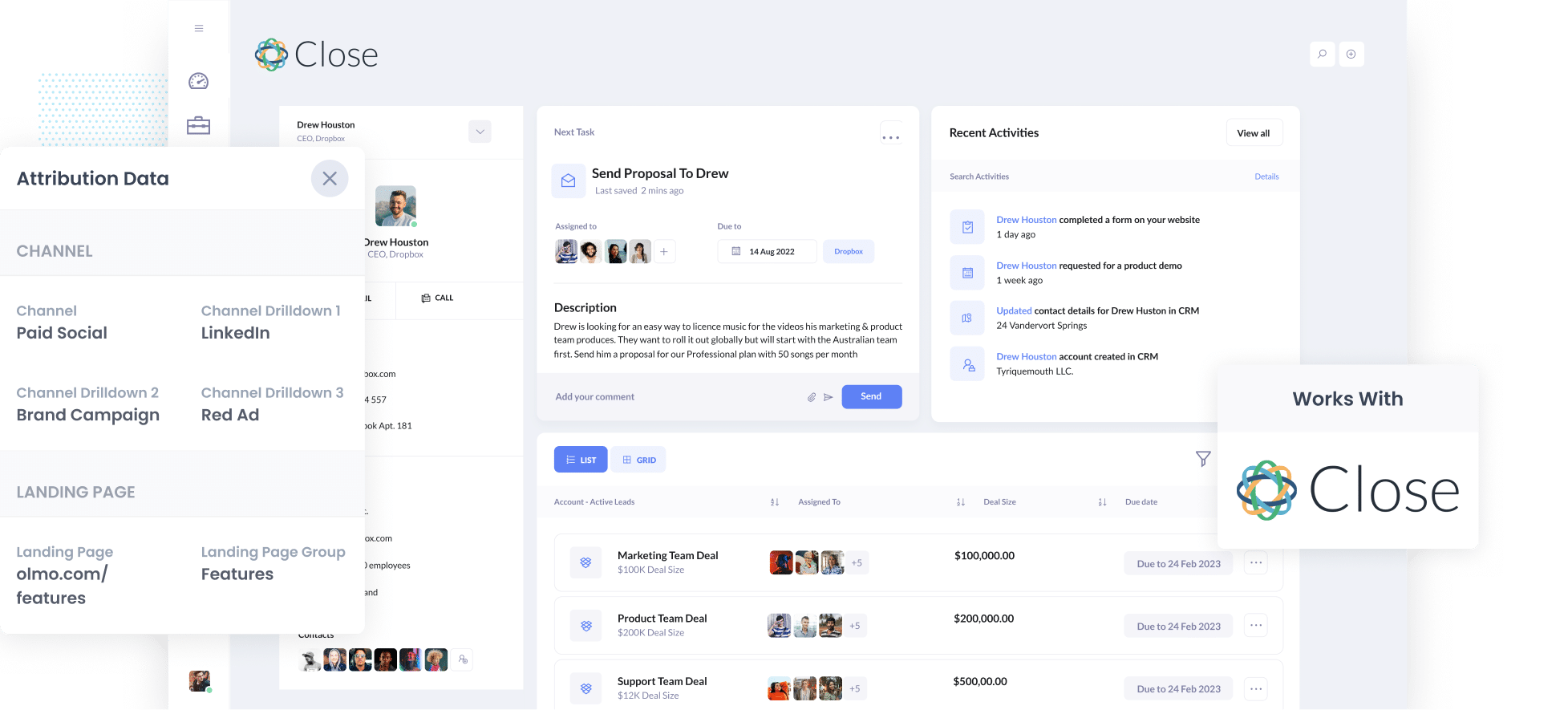
LinkedIn is a great platform for promoting you business, its products and services. LinkedIn offers marketers detailed audience targeting options so you can segment audiences by industry, job title, seniority and more.
However, the cost of ads can quickly ad up which means it's important to know if your ads are generating leads, opportunities and customers - not just site visits or clicks.
In this post, I'll walk you through how to use a simple tool called Attributer to track the leads and customers you generate from your LinkedIn Ads from right inside Close.
The easiest way to track LinkedIn Ads in Close CRM
Here are 4 simple steps so you can know how many leads and customers are generated by your LinkedIn Ads in Close:
1. Install Attributer on your website

Attributer is a piece of code that you add to your company's website to track where your leads and customers are coming from. Attributer passes marketing attribution information through to Close when a visitor submits a form on your website.
Installing Attributer on your website is easy. When you sign up for a 14 day free trial we'll send you a piece of code and you'll find instructions on how to add it here.
After you've added the code to your website, you need to include hidden fields to your forms, including:
- Channel
- Channel Drilldown 1
- Channel Drilldown 2
- Channel Drilldown 3
- Channel Drilldown 4
Attributer works with a wide variety of form builders (including Gravity Forms, Webflow Forms, Typeform and more). You'll also find instructions for adding hidden fields to dozens of form builders here.
2. Add UTM parameters to your ads

Next you need to add UTM parameters to your LinkedIn Ads.
UTM parameters are just pieces of text that you include at the end of the URL you are sending people to from your campaigns.
For example: if the page you are sending someone to is attributer.io/integrations/close then your final URL (with UTM parameters) might look like this:
attributer.io/integrations/close?utm_medium=paidsocial&utm_source=linkedin&utm_campaign=brand-campaign
UTM parameters help analytics tools like Attributer see where your leads are coming in from, which campaign they interacted with, what ad they clicked, etc.
3. LinkedIn Ads data is available in Close
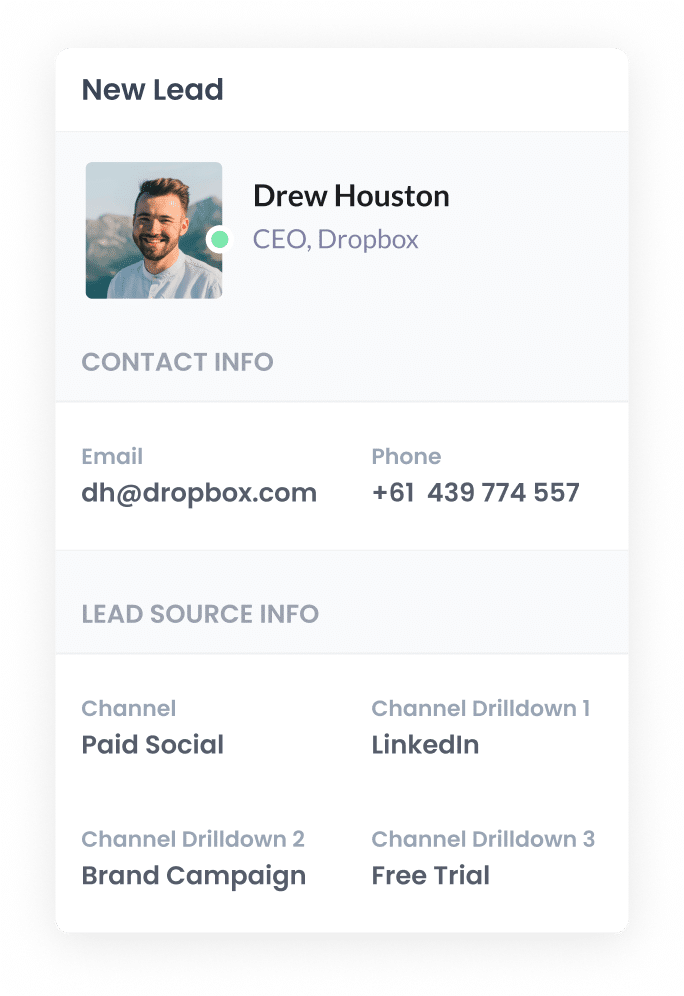
Once Attributer is installed and UTM parameters have been added to your ads, Attributer starts looking at where your website visitors are coming from (including those from your LinkedIn ads and other campaigns).
Attributer then sorts each visitor into a series of categories (like Paid Social, Paid Search, Organic Search, etc) and stores the information in a cookie in the visitor's browser.
When a visitor completes a form on your site, Attributer fills the hidden fields in your form with the information on where the lead came from.
That data can then be sent to Close along with the lead's name, email, company and any other information you capture in your forms.
4. Run reports to see if your ads are performing
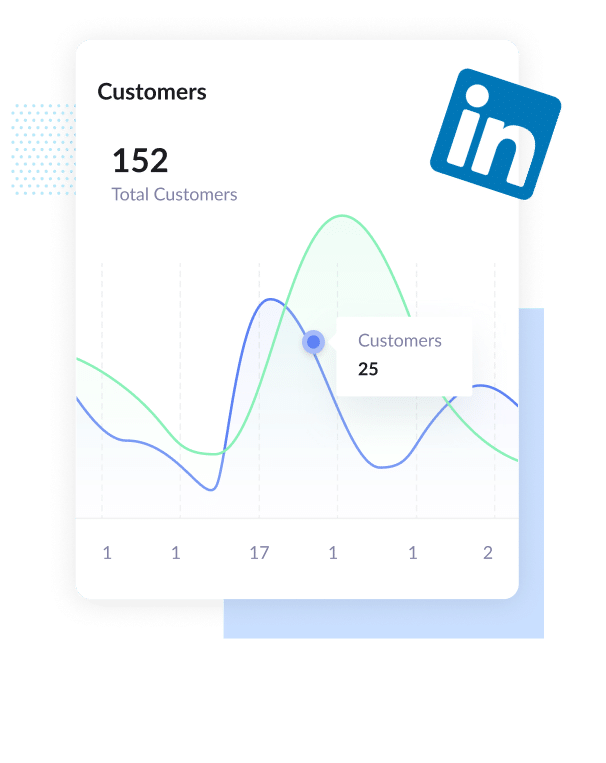
When your LinkedIn Ads data is flowing into Close you can use it to run reports to see which campaigns are generating the highest ROI. You can do this using either Close CRM's native reporting tools, or the reporting tools you have linked to Close (eg: Tableau, Microsoft Power BI, Looker, etc.)
When you have this data you can easily run reports to show the number of leads you're receiving from your LinkedIn ads, which campaigns are generating the most amount of leads, what the conversion rate from lead to opportunity is, what the close rate is, and how much revenue is being generated, etc.
What is Attributer and why use it?
Attributer is a piece of code you add to your company's website. The tool tracks where your leads and customers come from and populates hidden fields behind your forms with the data. When a form is completed, the marketing attribution data is captured by your form tool and sent to Close CRM.
This is really helpful information if you want to know if your marketing activities are actually delivering leads and customers - not just visitors or clicks. For example, if you're running marketing activities for a company that provides legal services and someone clicks on one of your ads, it would pass through the following information (depending on what you put in the UTM parameters):
- Channel: Paid Social
- Channel Drilldown 1: LinkedIn
- Channel Drilldown 2: Legal Campaign (or the specific campaign name)
- Channel Drilldown 3: Estate Ad (or whatever ad creative they clicked on)
Attributer is the best way to track your LinkedIn Ads in Close because it:
- Captures marketing attribution information - Attributer captures information on every lead which comes to your site through other channels like Paid Search, Organic Search, Organic Social, Referral, or Direct.
- Remembers the data - Attributer stores the UTM parameters in a cookie in the user’s browser, so if a visitor leaves your site and comes back or navigates around, the UTM parameters are passed through.
- Cleans the data - Attributer knows how to handle data inconsistencies in UTM usage. For example if you're using utm_source=linkedin in some campaigns and utm_source=LinkedIn in others. It knows how to categorize these leads to the correct channel (Paid Social in this case) regardless of the inconsistencies.
4 reports you can run when you track LinkedIn Ads data in Close
We founded Attributer after facing marketing attribution issues at every company we worked with over the past 15 years.
Over that time, I've spent more than $1 million on LinkedIn ads, plus more on other ad platforms. I've also spent countless hours running reports to see how those ads were performing.
Below are a some example reports I found useful to make better marketing decisions:
1. Leads by channel

Knowing the number of leads you get each month broken down by the channel they came from is a great way to get a high level perspective on where your leads are coming from.
It's great to support decision making because if you can see that the majority of your leads are coming from Organic Search (like in the chart above) but you're spending most of your budget on LinkedIn Ads, then it might help you to adjust your strategy.
2. Opportunities by network
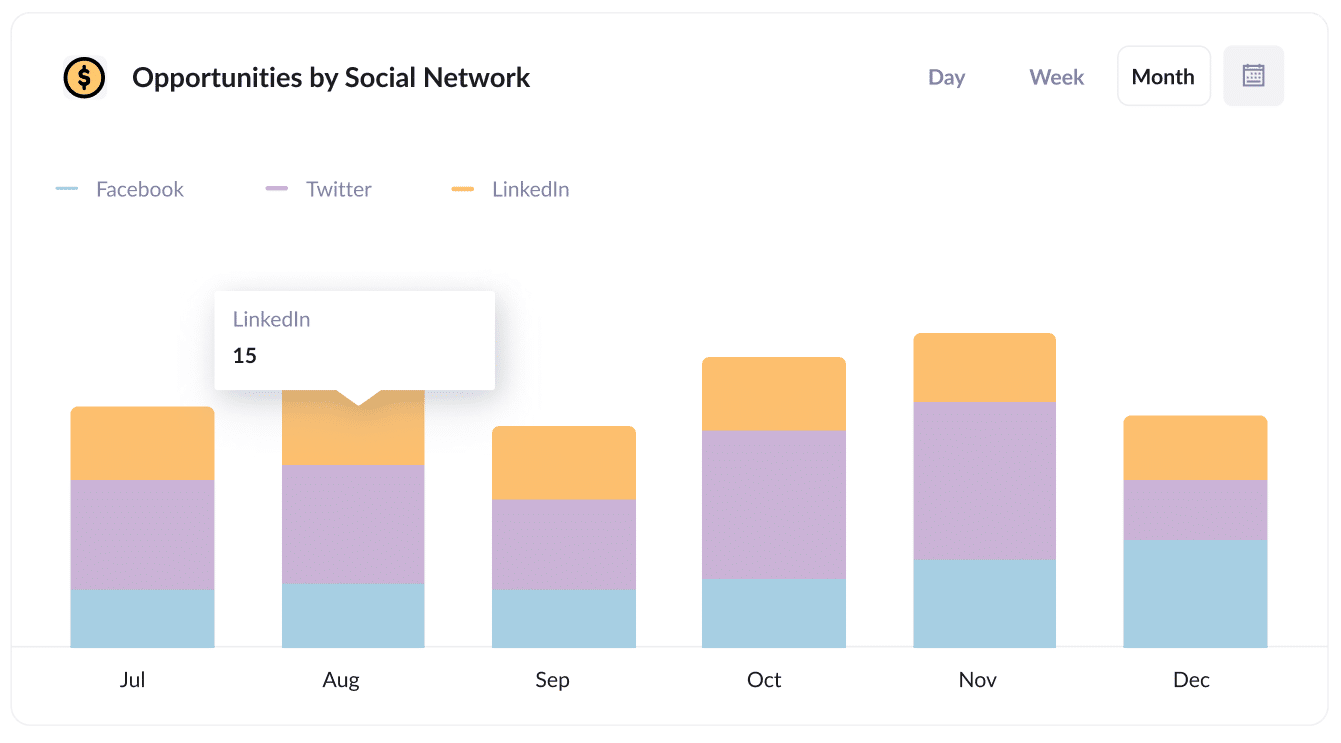
Many marketing teams run ads across several ad platforms. This means that understanding how many customers you get from your ads based on each network is important to make informed budget and resourcing decisions. The chart above shows you where to focus your budget to get the strongest results.
3. Customers by campaign

Highlighting the campaigns that deliver the most customers like in the chart above helps you to better understand which campaigns deliver customers to your business (as opposed to just delivering visitors or leads that don't convert).
4. Revenue by ad
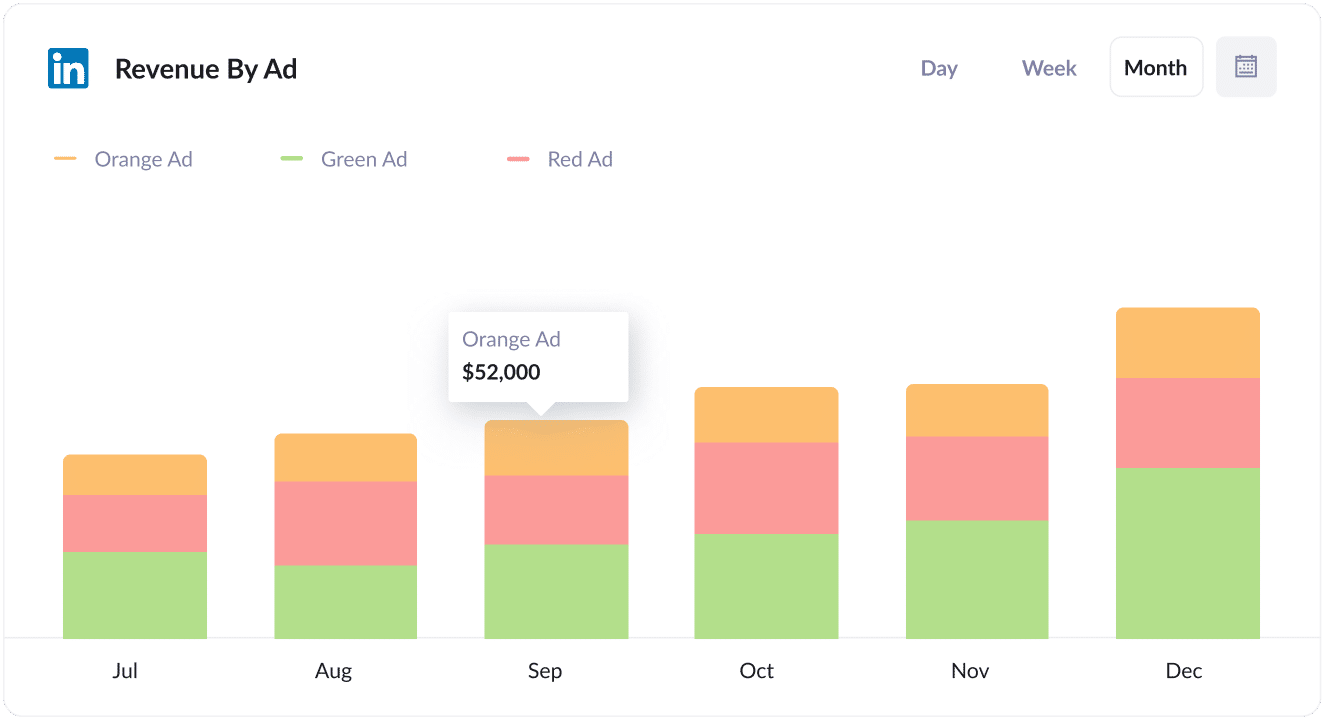
Segmenting revenue by ad (like in the chart above) shows you how much revenue is coming from each of your ads.
It helps you better understand which of your creatives are attracting the types of leads that convert into customers, and can also help you make your ad creative more effective.
Wrap up
Tracking how many leads and customers you get from your LinkedIn Ads (and other marketing activities) is what Attributer was specifically built to do.
Attributer helps you see the source of your leads, right down to the exact campaign, ad set, or ad they clicked. It also lets you see the data in your existing tools (I.e. Close).
Best of all, it's free to get going and only takes about 10 minutes to set up. So start a free 14-day trial of Attributer today to see how it can help you!
Get Started For Free
Start your 14-day free trial of Attributer today!

About the Author
Aaron Beashel is the founder of Attributer and has over 15 years of experience in marketing & analytics. He is a recognized expert in the subject and has written articles for leading websites such as Hubspot, Zapier, Search Engine Journal, Buffer, Unbounce & more. Learn more about Aaron here.
